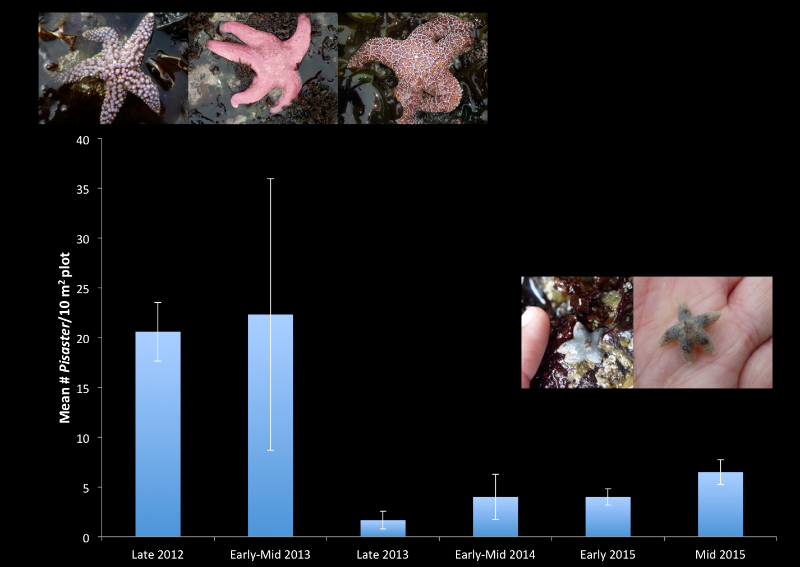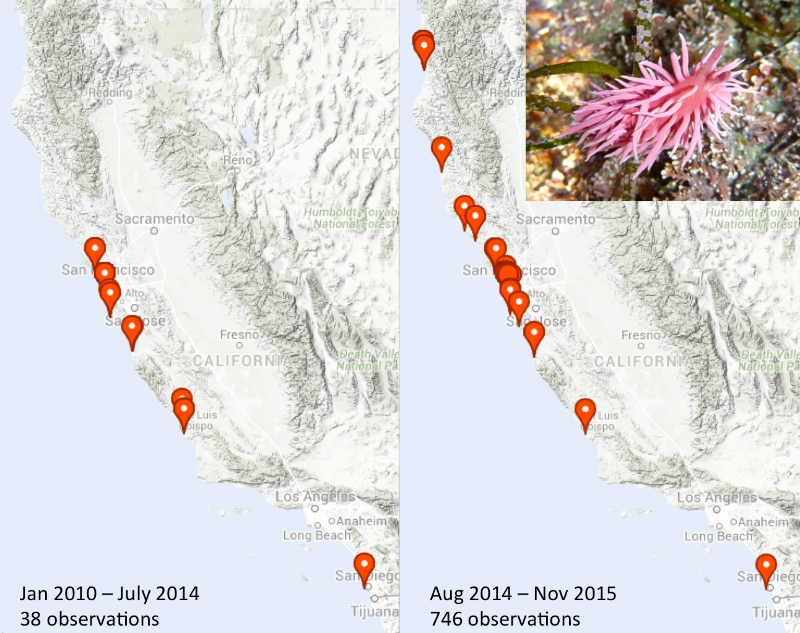Early 2016 dates... and some data visualization!
Happy Holidays everyone! We've picked some monitoring dates for January and February - let us know if you're planning on attending:
Friday, January 8: meet at 2:30. Low tide is -0.6 ft at 3:45 pm.
Monday, January 11: meet at 4 pm. Low tide is -0.9 ft at 5:45 pm. We'll do some night tidepooling that evening!
Thursday, January 21: meet at 1:30 pm. Low tide is -0.7 ft at 3 pm.
Monday, February 8: meet at 3:15 pm. Low tide is -0.8 ft at 4:45 pm.
Thursday, February 18: meet at 12:30 pm. Low tide is -0.2 ft at 2 pm.
In 2015 we continued tracking the effects of sea star wasting disease. Because we take photos when we're out monitoring, we can look back on our iNaturalist observations and see that we used to see mainly adult Pisaster individuals - P. ochraceus but also P. giganteus and P. brevispinus. After seeing the big decline in stars, we started finding very small individuals, which seem to be mainly ochre stars. Once we survey more of our sites this winter, we'll add in that data - since it seems like we've been seeing more healthy adults lately!
Late 2014 and into 2015 has also been unusual due to warming waters (El Niño!), and we've been seeing some interesting visitors in our tidepools. None more obvious than our used-to-be-so-rare-and-exciting-to-find-and-now-is-everywhere-all-the-time Hopkins' Rose (Okenia rosacea). And not just for us at Pillar Point, up and down the California coast they've been fully in bloom. Here's a comparison of maps of sightings on iNaturalist:
Prior to August 2014, most people would only see one. Now, it works out to something like 10 Hopkins' Roses per observer! Amazing!
We're looking forward to seeing what 2016 brings - hope to see you out in the tidepools!







Comments
Add a Comment